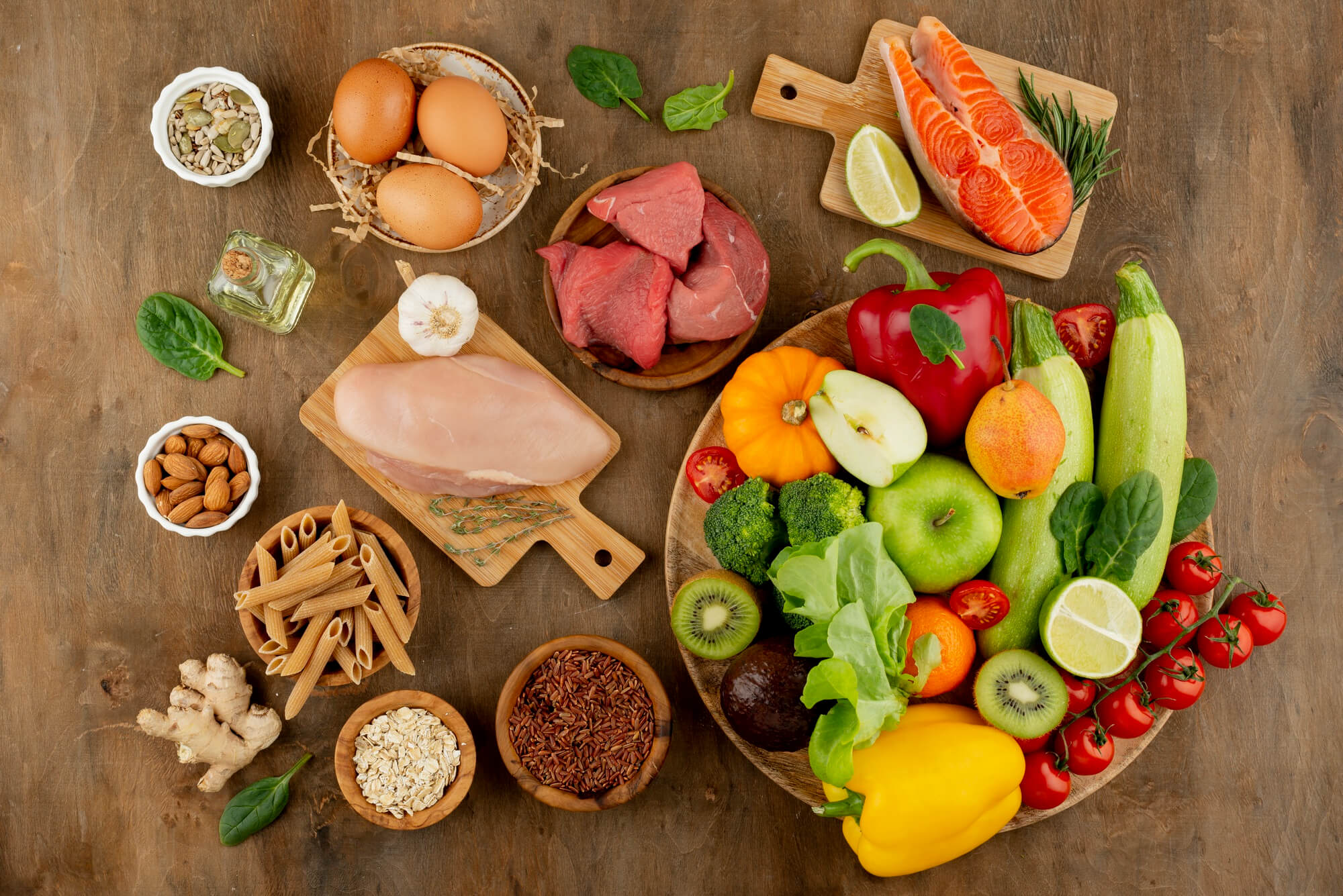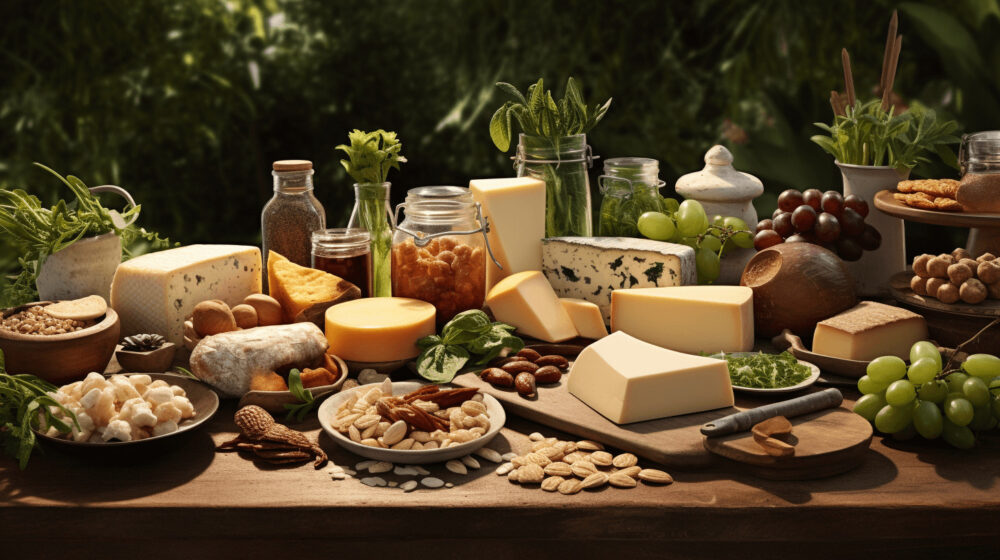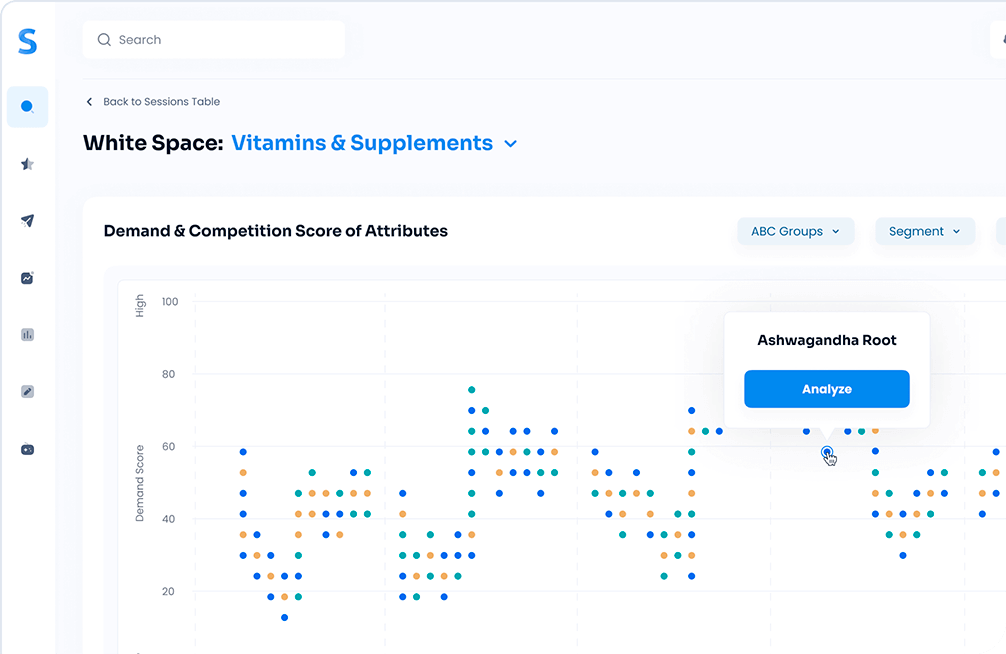Increased awareness about ingredients, a focus on “aesthetic” foods, and a post-pandemic boom in health-conscious dining have shaped many of the current food and beverage trends in the US. Consumers across all age groups are responsible for this shift, but Gen Z is definitely the strongest contributor.
Social media also played a huge role in defining today’s culinary trends, such as healthy eating, dairy-free diets, veganism, and more. As customers are learning more and more about ingredients and food processing practices – thanks to Google and social media – their needs are changing.
Stakeholders in the food & beverage space need to keep up with these ever-changing trends to ensure they provide the experience customers seek. Below, we provide our latest insights on the food and beverage market across the US, with information sourced from online sources and our Simporter software.
Overview of Ingredients
In today’s hectic and fast-paced lifestyle, nutrition bars have become a go-to snack for everyone, from students to office workers. Similarly, coffee is the preferred drink of choice to kickstart the day. Consumers are also becoming increasingly aware of the hazardous practices of the meat industry that have negative consequences on the planet and their health.
Kerry Group, a taste and nutrition firm, conducted a survey in which they found that 63% of US consumers began to eat plant-based products due to health reasons, whereas 40% bought them due to environmental motives. The report stated that consumers want meat with “improved nutrition and better environmental impact.”
Likewise, a report by the Plant-Based Food Association (PBFA) found that sales from plant-based foods amounted to over $3 billion in 2018. Sales of meat alternatives had also grown by 37% by 2019, mainly due to the Gen Z and millennial focus on animal welfare, climate change, and health.
Trending Ingredients
With regard to baby food, it is quite evident that parents are more conscious of the negative effects processed foods can cause. This trend is more evident than ever before. Millennial and Gen Z parents look for minimally-processed, allergen-free, and flavorful baby foods made with real fruit. Ingredients like turkey, apricot puree, mango, banana, apple, carrot, and pumpkin are preferred choices.
Meanwhile, purees and veggie blends seem to trend negatively as parents prefer whole foods for their young ones. Interestingly, parents are also becoming more open to introducing international flavors to their child’s menu, especially Indian and Chinese. Many of them also believe that herbs like rosemary and basil can make children’s food more appealing.
Plant-based meat and meat-free options also grew in popularity, as many healthcare experts and public figures advocate for them through their social media channels.
Sweet snacks are still as popular as ever, with nuts and honey-based products being sought after by health-conscious consumers. Interestingly, yogurt became a staple mid-day snack or breakfast option for many people. Some trending yogurt types include kefir, greek yogurt, flavored charities, and soy yogurt.
Speaking of soy, there has been a noticeable trend among consumers opting for non-dairy milk options, especially soy milk. While some consumers prefer it due to their dairy allergies, others are drawn to it for its perceived health benefits.
Declining Ingredients
In the coffee segment, matcha’s days seem to be over. The same is true for coconut milk and whole milk. This is true for coffee and yogurts as well. As for flavored water, people are steering away from cherry, pomegranate, and strawberries.
While cheese in general is doing pretty well, there seems to be a decline in cheddar’s popularity and consumption. Goat cheese and blue cheese are also of a similar fate.
The trends also differ across different types of cheese cuts, such as blocks, wheels, tubs, sliced, and snacks. For example, the sales of grated and shredded mozzarella have declined, but that of tubs, wheels, and blocks of mozzarella are up. Other cheese people prefer buying in tubs or blocks are brie, chevre, and blue varieties.
Overview of Sensory Attributes
Food sensory attributes, including texture, taste, flavor, odor, and appearance, are often used to determine likeability. Traditionally, crunchy and spicy foods have been favored by consumers, but the trend now seems to be shifting toward soft-textured food.
Trending Sensory Attributes
The flavorless option still remains the top sensory attribute in the baby food market. Nevertheless, since babies can eat full-fat pasteurized cheese from six months upward, parents tend to incorporate hard cheese, cream cheese, cottage cheese, and cheddar in the diets of their young ones.
Much like in the baby food market, peach & cherry tastes seem to be an emerging trend in the beverage market, with sweet and cold drinks remaining at the top.
Although health-conscious, consumers today do not seem to shy away from sweets. Chocolate, soft, and sweet snacks are a prevalent trend in the snack niche. Interestingly, cheese has also become a snack today, with bite-sized packages being the norm.
In the cheese market in general, consumers are drawn to products with a fluffy texture and creamy or herbal flavor, which they use in everything, from breakfast bagels to Mediterranean-style salads.
Declining Sensory Attributes
Simporter data shows that parents have switched out mushy, soft, sour, and fluffy baby foods for thick and mildly flavorful options.
Parents themselves prefer refreshing beverages and snacks without artificial flavors and over-the-top textures. That aligns with Innova Market Insight’s survey, which found that three out of five US consumers are willing to cut their sugar intake rather than replace it completely.
In the coffee department, Dalgona Coffee, once a social-media-trending drink during the pandemic, has sadly lost its hype.
Other sensory attributes that have followed suit are roasty, hot, stimulating, and buttery flavors. Coffee-flavored sweet snacks also no longer appeal to consumers. The same holds true for the vanilla-caramel combination and peppermint.
As we’ve already established, consumers now prefer soft and sweet foods. They seem to have given up on salty and crunchy cheeses too, and instead opt for zestful, smooth, and creamy options.
Overview of Consumer Needs
An International Food Information Council report found that two-thirds of consumers choose food and beverages based on their ingredients. Nearly 30% say ingredients influence their choices a lot, while 63% stated they’re being attentive to ingredient lists more than before. Most consumers try to choose products labeled as ”fresh”, ”organic”, ”not artificial” or ”natural.”
Since consumers are more aware of the ingredients and their implications, trends are changing drastically in the past few years.
Trending Consumer Needs
Millennial parents are cautious about the food they give to their kids. Most parents reach for foods that support healthy growth, contain quality ingredients, and are devoid of artificial colors and food preservatives. As for older consumers, free-from foods, such as lactose-free, fat-free, dairy-free, or sugar-free, are a prime favorite.
If the pandemic had a silver lining, it was that it got people to exercise more. That’s mainly why consumers look for workout beverages with antioxidants that give them energy and full flavor simultaneously.
In the dairy and coffee segments of the market, low-calorie, sugar-free, fat-free, and plant-based options are top choices for consumers. All across the board, it’s easy to notice that consumers refrain from buying products with artificial flavors and preservatives, opting instead for GMO-free foods and climate-pledge-friendly alternatives. Since over 3 million Americans have a nut allergy, it’s understandable why peanut-free foods are the top trend.
Environmentally friendly, on the whole, has impacted several industries, including the culinary sector. A PwC survey found that half of the global consumers are more eco-friendly than they were in the past. Unlike the corporate world, where sustainability has been alarmingly greenwashed, general consumers are persistent in learning about sustainable practices. In fact, there’s been a 71% increase in online searches for sustainable items. While price is still an important determinant of consumer choice, more than one-third of buyers are ready to pay more for sustainable products.
In the food & beverage market, this means people now try to buy cruelty-free meat products and foodstuffs made with low emissions. They also look for food items with recyclable and environmentally-friendly packaging. Consumers no longer compromise even when buying food for occasional snacking. They want sustainably-made foods with organic or plant-based ingredients that are not only nutritious and delicious but also healthy and appetizing.
Declining Consumer Needs
An interesting trend we’ve seen recently is the decline of keto-based products. What was once an international phenomenon for weight loss has been abandoned quickly. Part of the reason for this is easy access to YouTube and other learning resources where healthcare professionals uncover the truth about “magical” and “miraculous” weight loss diets.
Similarly, the demand for probiotic-enriched foods has gone down with the growing understanding that such products do not necessarily have long-term benefits, and claims surrounding them are predominantly hype-based. Even parents no longer buy probiotic purees.
Until a few years, a new hype would spread like wildfire and attract a huge pool of consumers. But now, conscious buyers are asking for evidence-based claims over food items. That’s why there has been a decline in the demand for nutrient-infused waters, rose water beverages, wine-antioxidant water, and electrolytes-containing water beverages.
People are beginning to understand that buzzwords like “stress-reducing,” “fuel’, and “superfoods” don’t mean much. Likewise, anything that is said to be “scientifically formulated” isn’t necessarily made in a lab. Due to increased awareness, there is a reasonable decline in the number of people falling for these dubious claims.
Moving Forward
The days when people only ate for flavor and taste are long gone! Modern consumers are more educated and knowledgeable than ever, which means they need nutrition, sustainability, safety, and taste packaged in the same item.
About 57% of consumers are trying to increase their whole grain, fruit, and veggie consumption, while 21% want to reduce their meat consumption. Another interesting thing to notice here is that although people want to make diet and lifestyle changes, factors like nutrition deficiency concerns, price, and taste are the barriers to implementing these changes.
Therefore, the food industry needs to redefine itself and create products that meet consumer expectations in terms of nutrition and sustainability while also being delicious and affordable. Companies must also go beyond just touting “healthy” labels. Instead, they can gain consumer trust by providing evidence-based claims, being transparent, and taking consumer feedback to improve their foodstuffs.
How to generate products based on the latest trends using Simporter
Simporter is an AI-powered tool designed to help product researchers with the ideation and launch of their next promising product. It scans the web using AI to identify the gaps in the market by filtering data from social media, e-commerce product reviews, search queries, and other sources. Here’s how to generate new products using Simporter in only 5 minutes.
Step 1 – Choose between trending ingredients, sensory attributes, and consumer needs
In Simporter you can see the total score each ingredient, sensory attribute, and consumer need has. These scores are calculated with our unique algorithm and are based on the demand score, competition score, and passion score.
Step 2 – Specify the importance of each attribute
For our drinks we’ve selected in total 11 attributes; 4 ingredients, 4 sensory attributes, and 3 consumer needs. Now we decide what level of importance we’ll give to each of these attributes.
The AI will automatically calculate the Total Blended Score of the concept, so you can play around with it and find the perfect fit.
Step 3 – Choose the Packaging Format
Step 4 – Generate product name and description with AI
In one click you can generate a product name and description for your new product using AI.
That’s it! Your new product is now ready!
If you want to learn more about Simporter head to our website to book a free demo to see how our tools can help you future-proof your business.









